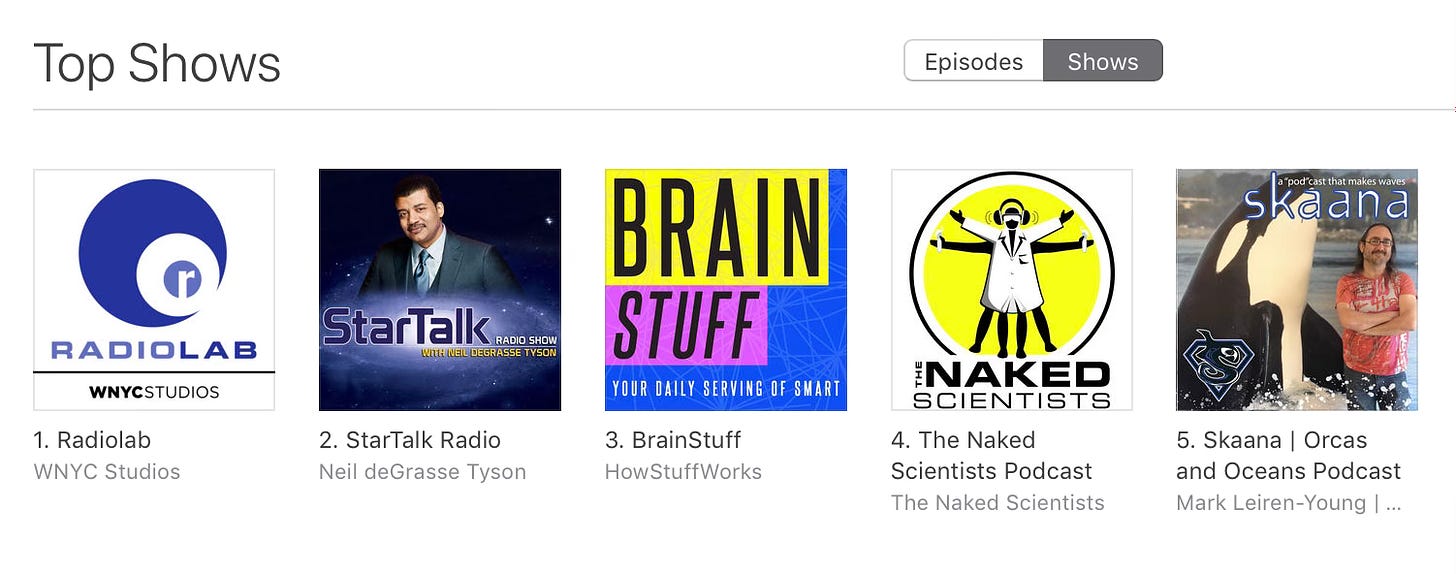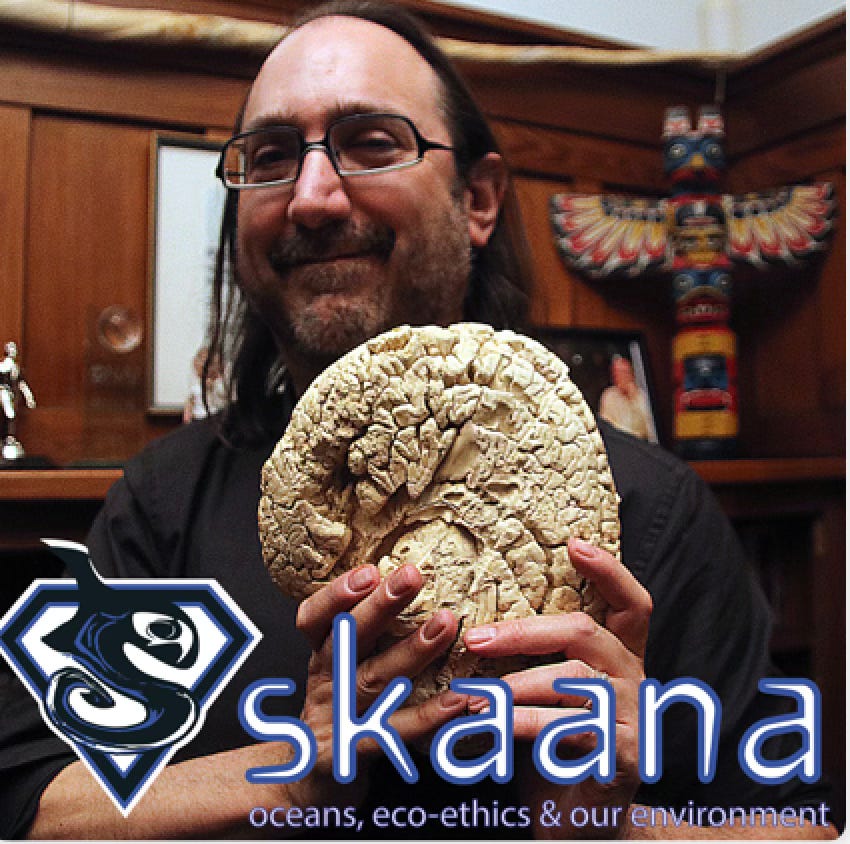How and why Skaana happened and why we’re not named "Podcast"
“In the future everybody will have a podcast for fifteen episodes.” - Andy Warhol
Hi all. I’ve spent the past week or so out of of commission with a medical issue - that I’m still in the middle of. I’m okay. Ish. I don’t want to be coy, but I also don’t want to get too detailed here because this isn’t the result of, say, a shark bite, so it’s not exactly on-brand. Basically a massive leg infection. If you know what “cellulitis” is - or if you don’t - it’s a ride that I’m now on for a bit. So this seemed like a fine time to share a piece I wrote ages ago about why/how the Skaana podcast came to be… Please stay tuned for Octopus-tober and much more…
Adventures in podcasting
“In the future, everybody will have a podcast for fifteen episodes.” - Andy Warhol
At least I think Warhol said that. I’m sure I read it on Facebook…
I took my first run at podcasting in 2007, back when it was about as mainstream as CB radio and had fewer listeners. I’d written and directed a movie about the challenges facing Canada’s forests, and I saw podcasts as a way to carry on the conversation outside of the theatre.
I had a blast. It was like having my own radio show without any team to help me out or, you know, any form of payment. Okay, it was like having a radio show in 2023.
I contacted friends in radio-land, asked them to recommend a recorder and started interviewing cool people about environmental issues.
I already worked as a journalist so interviewing cool people wasn’t new to me, but choosing the people I wanted to talk to and not having to convince an editor they were worth covering was a treat. And since this was my show I only talked to people I really wanted to meet.
With the exception of British Columbia’s Minister of Forests, everyone I approached for an interview was happy to spare an hour — or two — to talk. I discovered that people — even famous people — liked being interviewed for podcasts because podcast interviews are long enough to allow them to explore ideas, share stories and not worry about reducing complex concepts to cute sound bites.
So… I interviewed people. I imported the interviews into Garage Band on my Mac — which was easy enough that, um, I could use it.
I added an intro and a bit of music and I was done. The Tyee agreed to host the series and — this was the best part — someone there knew how to upload it to iTunes and was game to pick up the hosting fee for storing the audio file online.
The best interviews were collected into a book: The Green Chain: Nothing is Ever ClearCut — and I suspect the podcast reached more people than the movie had. I not only hit it off with some of my guests, but partnered with one of them — Tzeporah Berman — to write a book together.
Cut to 2017. I’m working on another movie and a book about killer whales and, in my research, I’m discovering how close the Southern Resident orcas are to extinction. I want to find out how to save the orcas… the oceans… our planet…
Time to launch a podcast.
Since I want to talk about whales I really wanted to call the podcast PODcast, but I’m warned this would be pretty much a death sentence on search engines. I opt for “Skaana” — in memory of Skana (the orca who inspired Greenpeace), in tribute to the name Haida artist Bill Reid gave to his amazing sculpture of an orca outside the Vancouver Aquarium (Skaana - the Haida name for orca) and to acknowledge that North America’s indigenous people have generally had a much saner handle on what orcas are all about than almost anyone else on the planet.
Once again I approached some of my eco-heroes for interviews and I’ve already interviewed several people I’d happily pay to watch speak. And today I don’t have to explain what a podcast is.
I’ve got friends with non-interview podcasts who review books or riff on pop culture and, thanks to the magic algorithms of iTunes, everything gets out there and can — theoretically — find its pod.
Not long after launching Skaana it was ranked number four in Natural Sciences — behind such indie darlings — NPR and Howstuffworks and some dude with a basement studio named DeGrasse Tyson.
Maybe now that I’ve posted here we’ll power past those three.
In 2023, podcasts are ubiquitous. (Thank you Serial.) I’m subscribed to two dozen of them. People buy ads on podcasts. Podcasts are even monetized. Sort of.
I’ve done a fair bit of research and, with very few exceptions — Canadaland, CBC and um the other shows produced by Canadaland — ads aren’t much of a thing and the main way Canadian podcasts like mine make any money is through Patreon. If you don’t know about Patreon, check it out now, because not only should you be supporting some of the creators you like, but you may want to consider finding funds (and fans) to develop your own work.
Like all crowd-funding sites, Patreon also works as a way to gauge interest in an idea.
My producer (and wife) Rayne Benu, and I decided we’d only launch Skaana if we had enough Patreon patrons to cover our basic costs — like hosting the audio, supporting a dedicated site and springing for online services that allow us to spread the word about what we’re up to.
I don’t know if we’ll ever make enough money to hit our goal of going weekly — nevermind make enough for this gig to make financial sense — but I do know I’m getting to talk to people who inspire me and share stories worth sharing. And I know that some of those stories will be turning up in whatever I write next.
An earlier version of this story appeared on gailanderson-dargatz.ca/
For my latest personal Substack I shared a piece I wrote about studying theatre and a review of my comedy duo, Local Anxiety, by the late & legendary Peter C. Newman.






